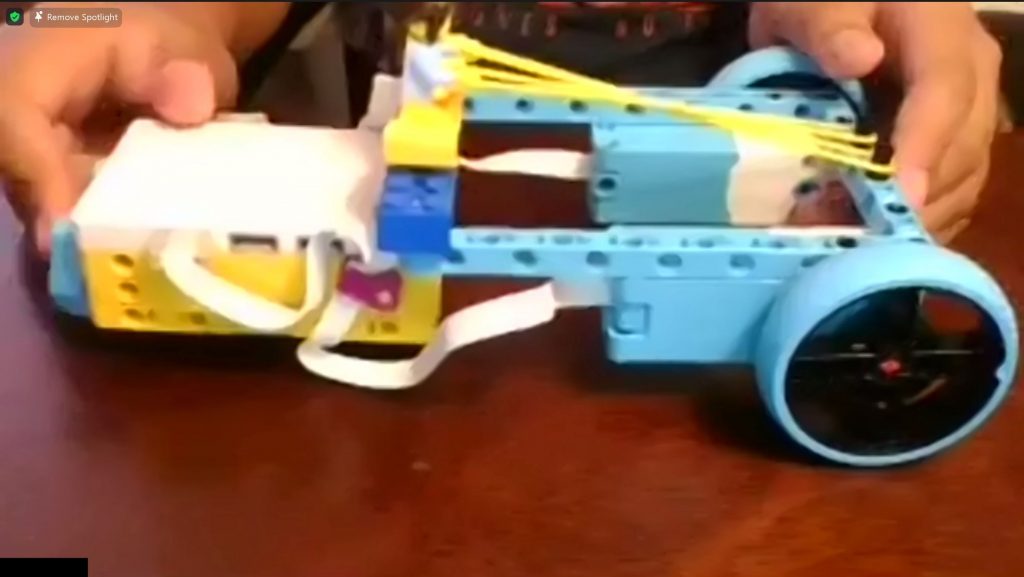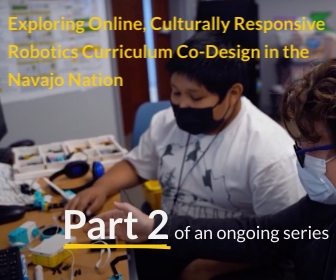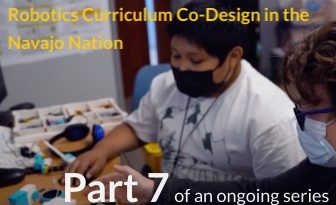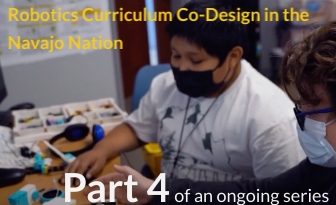Part 2: Maverick Teachers are Critical Partners
This is part of a series that chronicles the ongoing collaboration between Tufts CEEO and Little Singer Community School in the Navajo Nation. Click here to view the whole series.
TL;DR: Finding and working with enthusiastic teachers is a great way to co-develop educational ideas and projects. When short on prep time due to busy schedules, expert educators are good at working in the moment and collaborating in real-time to run successful activities.
Here at Tufts CEEO we are educator-focused; meaning that we look at teachers as partners and collaborators in developing ideas, curriculum, tools, and processes in education — not passive recipients of great ideas we came up with in isolation. Something we love to do is to discover and network with who we call “maverick teachers”: educators who are enthusiastic about trying new things and pushing the boundaries of what they can do in their classrooms, and act as local thought leaders and trend setters among their fellow educators. We’ve learned that by working with and supporting these innovators, we can empower them to develop authentic and effective teaching practices that spread to their coworkers and greater educational communities, thereby organically scaling up the impact of the work itself.
Tom Tomas, the 6th grade math and science teacher at Little Singer Community School is definitely a maverick teacher. In fact, I’d go further to say that he’s an educational rock star. Tom possesses all the qualities that make for a great educator: he’s deeply passionate about the work he does, he’s invested in the success of each of his students, he’s motivated and willing to put in the extra hours and effort so that his class receives the highest quality learning experiences, he is highly flexible and able to pivot in the moment when trying new things, and he constantly models a growth mindset by being willing to explore things alongside his students. On top of all this, Tom is a leader among his fellow educators at Little Singer, helping to organize and run various programs and events throughout the whole school. To end up working with Tom over these last few months has been like winning the lottery for me.
When I first met with Tom online to begin developing the ideas around how we would bring robotics and engineering to his class, we found it easy to appreciate and learn from what each of us was bringing to the table. I had a year of experience teaching online engineering workshops with LEGO SPIKE Prime and Arduino microcontrollers, and he was a veteran of science fairs, FIRST LEGO League, and daily online science and math teaching amid the pandemic. We had so much to learn from each other!
We had very limited time to prep outside of class throughout the weeks, and much of the meeting time we did get to have was spent reflecting and debriefing on what had already happened. From the time of our very first session to our last day of regular classes two months later, it was a whirlwind of experimentation and shifting between leading and following in the moment. Tom insisted on taking up the role of being a fellow peer among his students when our sessions would occur, choosing to learn alongside them and in real time. This was partly due to our inability to have enough prep time, but it was also because he wanted to help model best student practices like asking lots of questions, experimenting with the materials, and being willing to attempt things, fail, and try again without embarrassment.
It would have been ideal to have had the time to meet before each class and discuss the engineering projects that I was bringing, but between our two extremely busy schedules, we couldn’t always do it. So instead, I was mindful that I was a guest who was coming in not to present fully established teachings for them to accept on my authority, but to simply share what I knew and to learn as much as I could from them at the same time. Tom and I constantly collaborated in the moment, with me sharing my favorite design and building challenges, and Tom drawing parallels to Navajo culture and ways of thinking. Tom’s classes are bilingual, being taught in English but also focusing on key Diné words and phrases in science and engineering. So together, we crafted culturally relevant activities and projects on the spot.
At the time, this model was a necessity due to time constraints, but in hindsight, I think it was generally really successful and fun. It seemed like the students responded really positively to Tom learning along with them and encouraging their own curiosity and creativity. And because Tom was constantly drawing parallels and infusing our work with Navajo principles, he still maintained a status of authority in the classroom. It was very apparent that we were collaborating spontaneously, and I think the students picked up on it and appreciated it. Perhaps in an ideal situation, we would have had many weeks and dozens of hours to teach each other ahead of time and prepare neatly rehearsed lessons. But I actually really enjoyed the “in the moment” project development model that Tom and I ended up doing, and this attitude helped us navigate the many surprises and challenges that would pop up along the way. But more on that in the next post.





